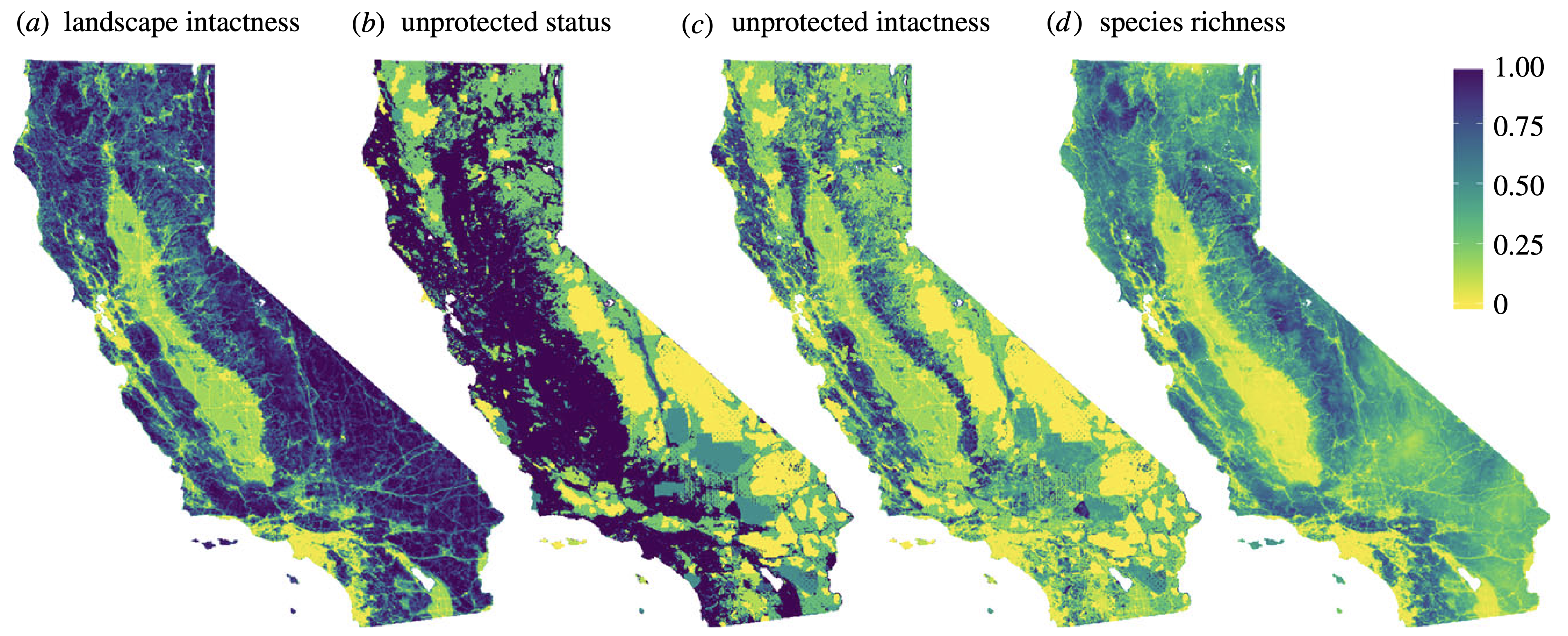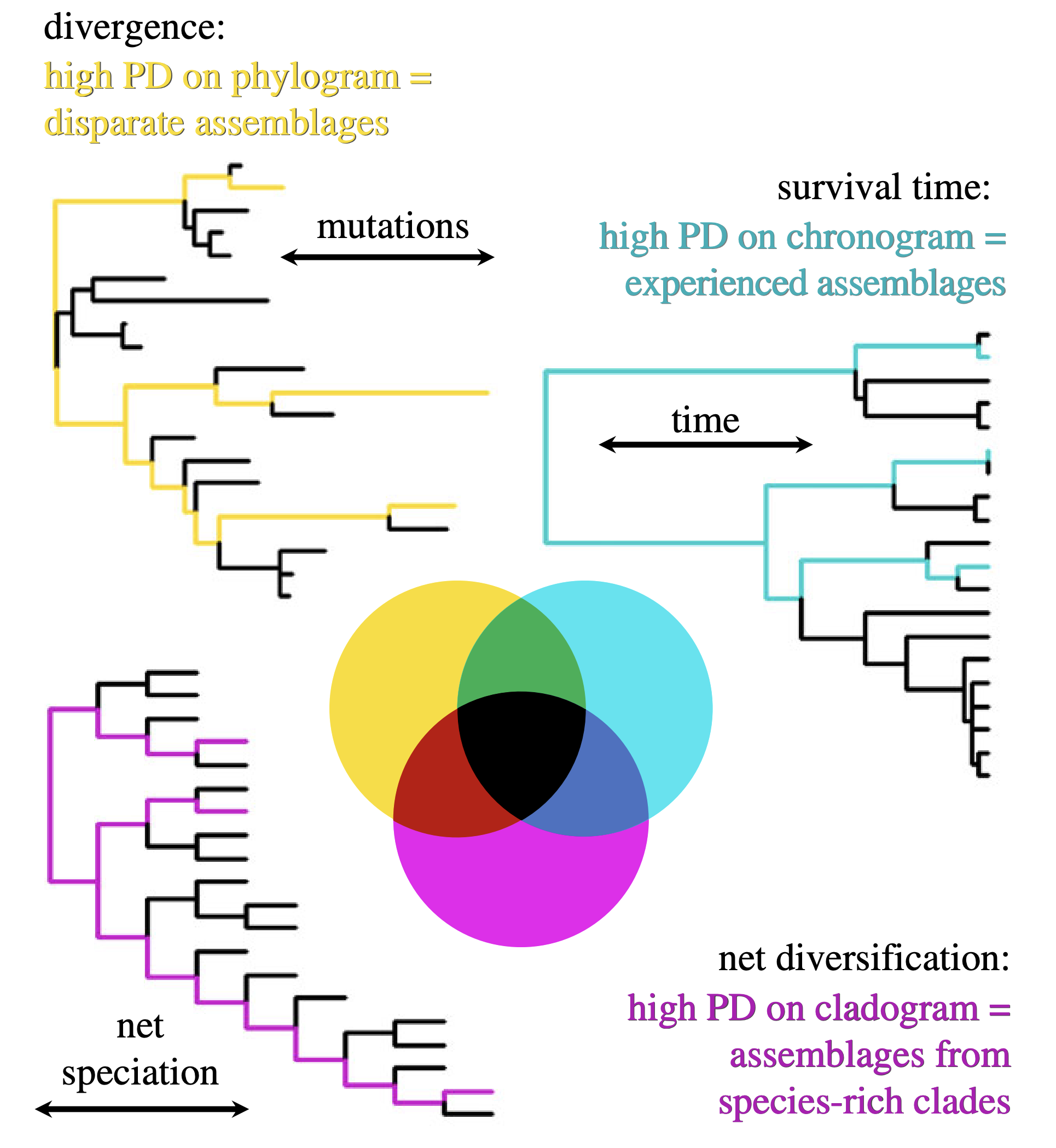Conservation priorities for California plants
[PUBLICATION] Facets of phylodiversity: evolutionary diversification, divergence, and survival as conservation targets

Overview
This research, published in Philosophical Transactions of the Royal Society B (2018), advances both conceptual and empirical approaches to incorporating evolutionary history into conservation prioritization, using California’s diverse and threatened flora as a case study.
Research Objectives
Our project had dual goals:
-
Empirical: Develop a rigorous spatial conservation prioritization for California’s 5,000+ plant species by:
- Building distribution models for each species
- Assembling data on protection status of all land parcels in California
- Incorporating landscape intactness metrics
- Identifying optimal sites for new protected areas
-
Conceptual: Refine theoretical frameworks for using evolutionary information in conservation by:
- Exploring the three facets of phylogenetic diversity (PD) related to macroevolutionary processes
- Connecting each facet to distinct conservation objectives
- Demonstrating how these approaches can yield different conservation priorities
Impact
The conservation prioritization developed through this research is being utilized by several organizations, including The Nature Conservancy, the California Department of Fish and Wildlife, and the California Native Plant Society, to inform their spatial conservation planning efforts.
Resources
To facilitate broader access to this research, I developed the California Plant Phylodiversity Atlas, an interactive web application that allows users to explore the phylogenetic, geographic, and community dimensions of California plant biodiversity.

Citation: Kling, M.M., Mishler, B.D., Thornhill, A.H., Baldwin, B.G., & Ackerly, D.D. (2018). Facets of phylodiversity: evolutionary diversification, divergence, and survival as conservation targets. Philosophical Transactions of the Royal Society B, 374(1763), 20170397. https://doi.org/10.1098/rstb.2017.0397